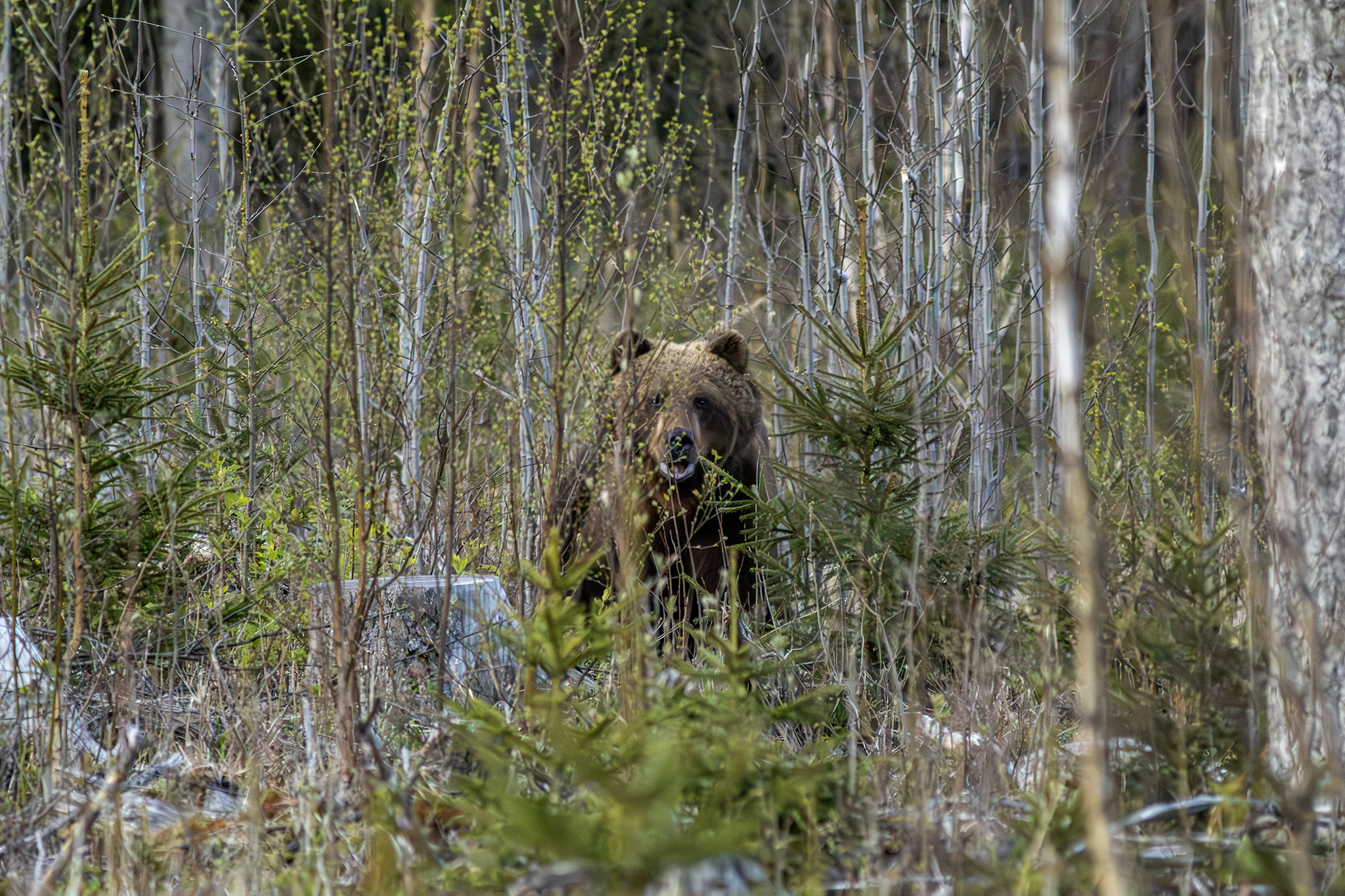🐻 Brown Bear (Ursus arctos)
The brown bear is one of the most widespread and powerful terrestrial carnivores in the world. Renowned for its sheer size, strength, and intelligence, this species occupies a wide range of habitats across the Northern Hemisphere, from the forests of Europe and North America to the mountains of Central Asia.
🔍 Identification
- Size:
- Males: 130–700 kg (290–1,540 lbs), depending on subspecies and region
- Females: Generally smaller, 100–350 kg (220–770 lbs)
- Height: Up to 1.5 meters at the shoulder when standing on all fours; over 2.5 meters when upright
- Appearance:
- Thick brown to dark brown fur (can vary from blond to nearly black)
- Large head, small rounded ears, and powerful shoulders with a noticeable hump
- Strong legs and massive claws adapted for digging
🌍 Distribution & Habitat
- Range: Found across North America (grizzly bears), Europe, Russia, and Asia
- Habitats:
- Forests, mountains, tundra, and coastal regions
- Requires large territories, especially in the wild
🧬 Diet & Behavior
- Diet: Omnivorous
- Eats plants, berries, roots, insects, fish (notably salmon), small mammals, and carrion
- Opportunistic feeders that may raid beehives or human waste
- Hibernation:
- In colder climates, brown bears hibernate in dens during winter
- They fatten up in late summer and fall to survive months without eating
- Solitary:
- Typically solitary, except during mating season or when food is plentiful (e.g., salmon runs)
- Mothers are fiercely protective of cubs
🐾 Reproduction
- Breeding season: May to July
- Delayed implantation: Fertilized eggs don’t implant until autumn
- Cubs:
- Born in January or February while the mother hibernates
- Usually 1–3 cubs per litter
- Stay with their mother for up to 2–3 years
🌟 Interesting Facts
- The grizzly bear is a subspecies of the brown bear (Ursus arctos horribilis)
- Brown bears have a keen sense of smell, better than that of dogs
- Despite their size, they can run at speeds up to 50 km/h (31 mph)
- They are excellent swimmers and can climb trees when young
✅ Conservation Status
- Global status: Least Concern (IUCN), but some regional populations are endangered
- Threats include:
- Habitat loss
- Poaching
- Human-bear conflicts
- Protected in many countries; population is recovering in parts of Europe
📌 Summary
The brown bear (Ursus arctos) is a symbol of wilderness and strength, deeply respected across cultures. Whether lumbering through forests, fishing in rivers, or sleeping through the winter in mountain dens, this magnificent mammal remains a powerful and vital part of many ecosystems.
Visited 57 times, 10 visit(s) today
Views: 180
Subscribe to the newsletter:
